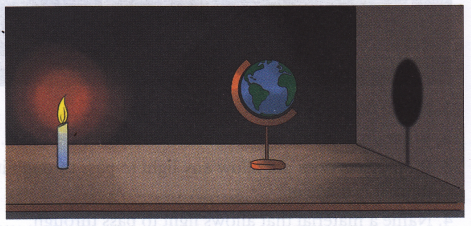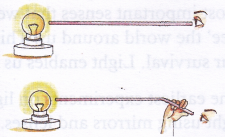What Is Rectilinear Propagation Of Light
Usually light travels in a straight line. When we want to represent the propagation of light with a diagram, we represent it with the help of rays and beams.
Ray A ray is a line with an arrow that shows the direction of propagation of light, and such a diagram is called a ray diagram.
Beam A group of light rays moving in an organized manner is called a beam of light.

The property of light to travel in straight lines explains many interesting phenomena related to light, like formation of shadows by opaque objects and formation of images in a pin-hole camera.
Generally, light travels in a straight line in a uniform transparent medium or in vacuum. This mode of propagation of light is called rectilinear propagation.
Let us understand rectilinear propagation of light with the help of the following activity. Rectilinear propagation of light explains a lot of phenomena associated with light. One such phenomenon is the formation of shadows.
When you shine a torch in a dark room, you can see a beam of Word help light. If you place a globe infront of a lit candle, a shadow can be Rectilinear consisting or seen on the wall. This shadow is formed when the globe blocks bound by straight lines the light travelling in a straight line. This is possible because of — rectilinear propagation of light.

There are many instances in our daily lives where we come across rectilinear propagation of light. Can you see your friend if he/ she is hiding behind a chair? You cannot because the light travelling from your friend to you travels in straight lines, and it is blocked by the chair. If light could bend, it would have gone around the chair and you would have been able to see your friend.
Activity
Aim: To verify that light travels in a straight line.
Materials needed: A flexible rubber or plastic tube/straw of length 10 inches (used for drinking cold drinks), and a light bulb/candle/lamp.
(Note: Do not use sunlight as the source of light in this experiment as it could hurt your eyes.)
Method:
- Hold the tube absolutely straight and point one open end to the source of light.
- Put your eye to the other hole. What do you see?
- Now bend the tube and look through the hole. What do you see this time?

Observation: When the tube is held straight, the source of light can be seen. However, when the tube is bent, the source of light cannot be seen.
Conclusion: This indicates that light travels in a straight line.
